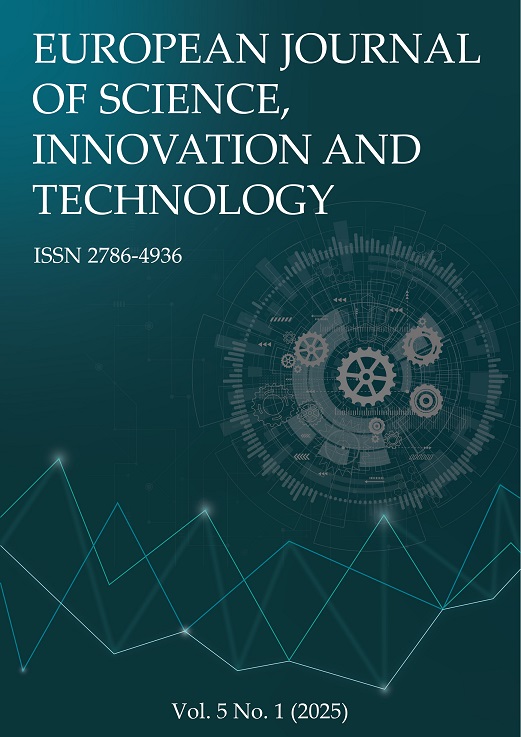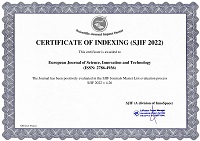Mould and Termite Resistance of Heat Treated Loblolly Pine Wood (Pinus taeda) and Rubberwood (Hevea brasiliensis) in Mixture of Oleoresin and Used Cooking Oil
Abstract
This study investigated the effects of heat treatment using a mixture of natural oleoresin and used cooking oil on the mould and termite resistance of loblolly pine wood (Pinus taeda) and rubberwood (Hevea brasiliensis). Oleoresin, a non-timber forest product derived from Dipterocarp species native to Southeast Asia, was sourced from central Vietnam, while used cooking oil was obtained from an oil-recycling facility. Wood samples were heat-treated at varying oleoresin ratios (20 – 40 %), temperatures (130 – 180 °C), and durations (90 – 180 min). Response surface methodology was applied to assess the influence of these factors on mould and termite resistance under laboratory conditions. For mould resistance, specimens were evaluated at intervals of 1, 2, 4, and 8 weeks following inoculation with a conidial mixture of five mould species isolated from infected wood. Termite resistance was assessed according to Vietnamese standard TCVN 11355:2016, which aligns with the European standard EN 118:2013, using subterranean termites (Coptotermes spp.). Results demonstrated significant improvements in the mould and termite resistance of both loblolly pine wood and rubberwood, allowing for the identification of optimal treatment parameters for heat treatment using oleoresin combined with used cooking oil.
References
Cao, R., Marttila, J., Mottonen, V., Herajarvi, H., Ritvanen, P., & Verkasalo, E. (2020). Mechanical properties and water resistance of Vietnamese acacia and rubberwood after thermo-hygro-mechanical modification. European Journal of Wood and Wood Products, 78, 841–848. https://doi.org/10.1007/s00107-020-01552-7
British Standards Institution. (2013). EN 118:2013: Wood preservatives - Determination of preventive action against Reticulitermes species (European termites) (Laboratory method).
British Standards Institution. (2005). CEN/TS 15082: Wood preservatives-Determination of the preventive effectiveness against sapstain and mould fungi on freshly sawn timber field test.
Dao, H. C. (2004). An assessment research into the penetration - proof capability of Dipterocarpus alatus Roxb oil. Journal of Science and Technology, (6).
H’ng, P. S., Lee, S. H., & Lum, W. C. (2012). Effect of post heat treatment on dimensional stability of UF bonded particleboard. Asian Journal of Applied Sciences, 5(5), 299–306. https://doi.org/10.3923/ajaps.2012.299.306
Hao, X., Wang, Q., Wang, Y., Han, X., Yuan, C., Cao, Y., Lou, Z., & Li, Y. (2021). The effect of oil heat treatment on biological, mechanical and physical properties of bamboo. Journal of Wood Science, 67, 26. https://doi.org/10.1186/s10086-021-01959-7
Hill, C., Altgen, M., & Rautkari, L. (2021). Thermal modification of wood-a review: chemical changes and hygroscopicity. Journal of Materials Science, 56, 6581–6614. https://doi.org/10.1007/s10853-020-05722-z
Kaya, A. I. (2023). Combined effects of linseed oil and heat treatment on the properties of cypress and maple wood Part 1: Water absorption, mechanical properties, and sound absorption capacity. BioResources, 18 (2), 2940–2963. https://doi.org/10.15376/biores.18.2.2940-2963
Lacić, R., Hasan, M., Trajković, J., & Despot, R. (2014). Biological Durability of Oil Heat Treated Alder Wood. Drvna Industrija, 65 (2), 143–150. https://doi.org/10.5552/drind.2014.1256
Lee, S. H., Ashaari, Z., Lum, W. C., Abdul Halip, J., Ang, A. F., Tan, L. P., Chin, K. L., & Md Tahir, P. (2018). Thermal treatment of wood using vegetable oils: A review. Construction and Building Materials, 181, 408–419. https://doi.org/10.1016/j.conbuildmat.2018.06.058
Lee, S. H., Ashaari, Z., Lum, W. C., Ang, A. F., Abdul Halip, J., & Halis, R. (2018). Chemical, physico-mechanical properties and biological durability of rubberwood particleboards after post heat-treatment in palm oil. Holzforschung, 72(2), 159–167. https://doi.org/10.1515/hf-2017-0086
Luu, H. T., & Pinto, F. (2007). Dipterocarp oleoresin in Vietnam and Cambodia: Harvesting techniques, resource management and livelihood issues: A report from an exchange visit to Cambodia. Center for Biodiversity and Development (CBD). https://www.academia.edu/61632220/Dipterocarp_
oleoresin_in_Vietnam_and_Cambodia_harvesting_techniques_resource_management_and_livelihood_issues_A_report_from_an_exchange_visit_to_Cambodia
Lyon, F., Thevenon, M. F., Hwang, W. J., Imamura, Y., Gril, J., & Pizzi, A. (2007). Effect of an oil heat treatment on the leachability and biological resistance of boric acid impregnated wood. Annals of Forest Science, 64, 673–678. https://doi.org/10.1051/forest:2007046
Mandraveli, E., Mitani, A., Terzopoulou, P., & Koutsianitis, D. (2024). Oil heat treatment of wood—A comprehensive analysis of physical, chemical, and mechanical modifications. Materials, 17(10), 2394. https://doi.org/10.3390/ma17102394
Manola, R. D., & Garcia, C. M. (2012). Termite resistance of thermally-modified Dendrocalamus asper (Schultes f.) Backer ex Heyne. Insects, 3(2), 390–395. https://doi.org/10.3390/insects3020390
Mastouri, A., Efhamisisi, D., Shirmohammadli, Y., & Oladi, R. (2021). Physicochemical properties of thermally treated poplar wood in silicone and rapeseed oils: A comparative study. Journal of Building Engineering, 43, 102511. https://doi.org/10.1016/j.jobe.2021.102511
Ohmura, W., Doi, S., Aoyama, M., & Ohara, S. (2000). Antifeedant activity of flavonoids and related compounds against the subterranean termite Coptotermes formosanus Shiraki. Journal of Wood Science, 46, 149–153. https://doi.org/10.1007/BF00777362
Okon, K. E., & Udoakpan, U. I. (2019). Physicochemical properties of Pinus massoniana wood subjected to silicone oil heat treatment. Maderas. Ciencia y Tecnología, 21(4), 531–544. https://doi.org/10.4067/S0718-221X2019005000409
Commission for Standards, Metrology and Quality of Vietnam. (2016). TCVN 11355:2016: Wood preservatives - Determination of preventive action against Coptotermes species - Laboratory method.
Suri, I. F., Purusatama, B. D., Kim, J. H., Hidayat, W., Hwang, W. J., Iswanto, A. H., Park, S. Y., Lee, S. H., & Kim, N. H. (2023). Durability of heat-treated Paulownia tomentosa and Pinus koraiensis woods in palm oil and air against brown- and white-rot fungi. Scientific Reports, 13, 21929. https://doi.org/10.1038/s41598-023-48971-z
Tang, T. K. H., & Nguyen, N. Q. (2021). Effect of oleoresin heat treatment on mechanical and physical properties of the bamboo Thyrsostachys siamensis. Journal of Forestry Science and Technology, (12), 106–115. https://journal.vnuf.edu.vn/en/article/view/462
Tang, T. K. H., Trinh, H. M., & Nguyen, T. T. H. (2022). Mould resistance of the bamboo Thyrsostachys siamensis treated with oleoresin heat. Journal of Forestry Science and Technology, (13), 103–108. https://doi.org/10.55250/jo.vnuf.2022.13.103-108
Umar, I., Zaidon, A., Lee, S. H., & Halis, R. (2016). Oil-heat treatment of rubberwood for optimum changes in chemical constituents and decay resistance. Journal of Tropical Forest Science, 28(1), 88–96. https://www.jstor.org/stable/43748082
Copyright (c) 2025 Thi Kim Hong Tang, Nhat Quang Nguyen

This work is licensed under a Creative Commons Attribution 4.0 International License.


 ISSN
ISSN 











